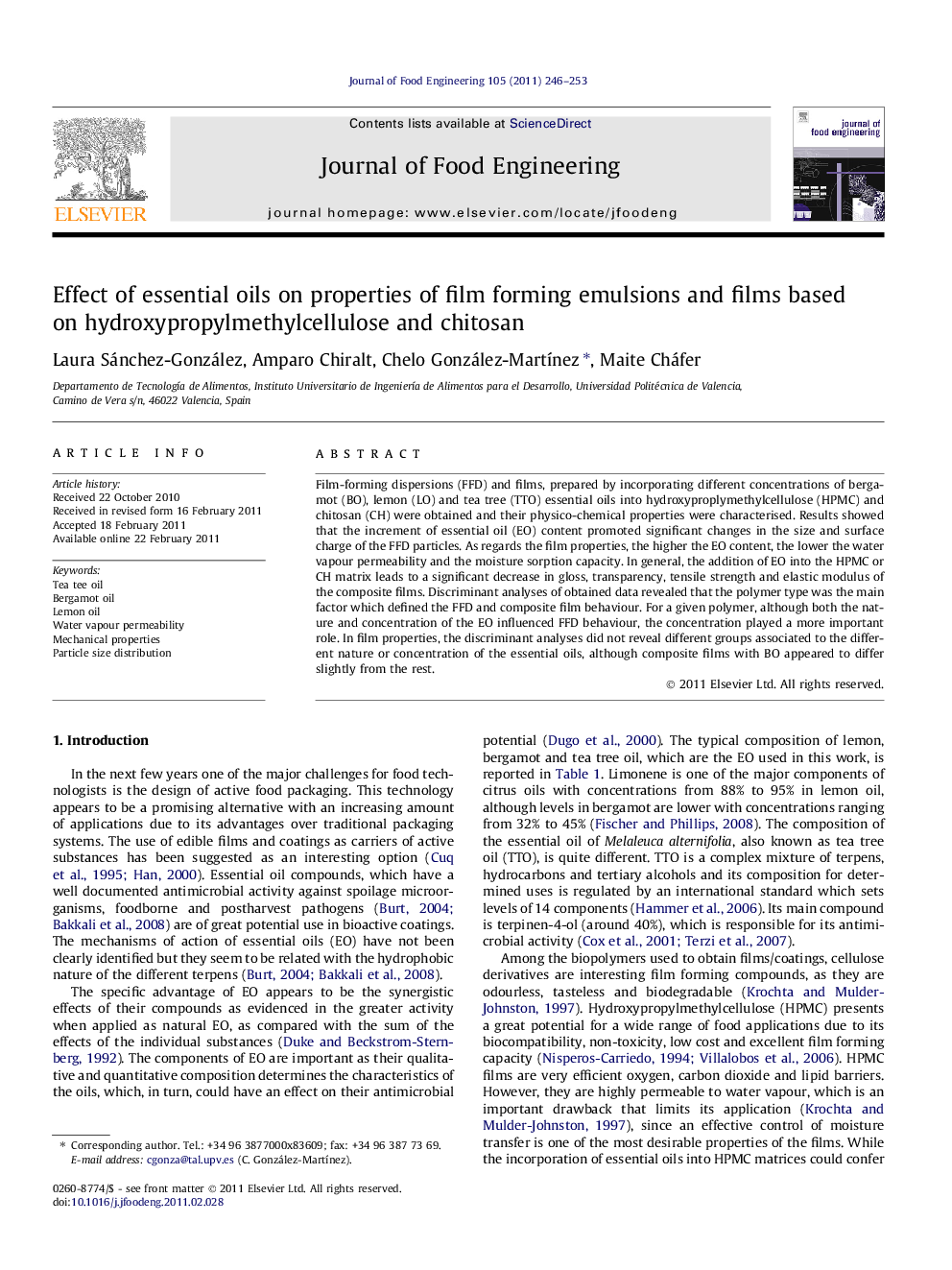| کد مقاله | کد نشریه | سال انتشار | مقاله انگلیسی | نسخه تمام متن |
|---|---|---|---|---|
| 224013 | 464420 | 2011 | 8 صفحه PDF | دانلود رایگان |

Film-forming dispersions (FFD) and films, prepared by incorporating different concentrations of bergamot (BO), lemon (LO) and tea tree (TTO) essential oils into hydroxyproplymethylcellulose (HPMC) and chitosan (CH) were obtained and their physico-chemical properties were characterised. Results showed that the increment of essential oil (EO) content promoted significant changes in the size and surface charge of the FFD particles. As regards the film properties, the higher the EO content, the lower the water vapour permeability and the moisture sorption capacity. In general, the addition of EO into the HPMC or CH matrix leads to a significant decrease in gloss, transparency, tensile strength and elastic modulus of the composite films. Discriminant analyses of obtained data revealed that the polymer type was the main factor which defined the FFD and composite film behaviour. For a given polymer, although both the nature and concentration of the EO influenced FFD behaviour, the concentration played a more important role. In film properties, the discriminant analyses did not reveal different groups associated to the different nature or concentration of the essential oils, although composite films with BO appeared to differ slightly from the rest.
Journal: Journal of Food Engineering - Volume 105, Issue 2, July 2011, Pages 246–253